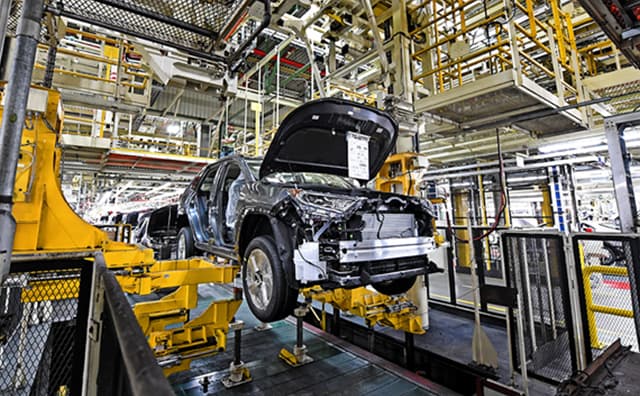Want to know more about how Fujitsu can help you achieve your sustainable transformation?
FedEx:
Leaping to future points on the innovation curve

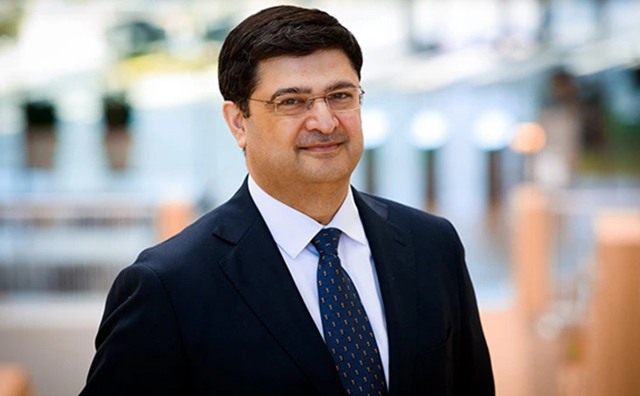 Nik Puri, SVP International IT, FedEx (Image: Mark van den Brink, courtesy of FedEx)
Nik Puri, SVP International IT, FedEx (Image: Mark van den Brink, courtesy of FedEx)
“In 2020, the future arrived early for us,” says Nik Puri, Senior Vice President of International IT at global logistics and transportation giant FedEx.
He’s referring, of course, to the impact on the company of the COVID-19 pandemic. This has sent global demand for delivery services soaring to unimaginable levels, with many consumers and businesses counting on couriers such as FedEx to fulfill online orders and keep their lives and operations running.
He’s referring, of course, to the impact on the company of the COVID-19 pandemic. This has sent global demand for delivery services soaring to unimaginable levels, with many consumers and businesses counting on couriers such as FedEx to fulfill online orders and keep their lives and operations running.
His choice of the term ‘leapfrogging’ is an interesting one. In business economics circles, it’s used to refer to the process by which start-up companies and emerging economies deploy new technologies to gain an advantage over more established competitors that have been forced to work through previous iterations of older technologies.
His choice of the term ‘leapfrogging’ is an interesting one. In business economics circles, it’s used to refer to the process by which start-up companies and emerging economies deploy new technologies to gain an advantage over more established competitors that have been forced to work through previous iterations of older technologies.
Puri’s leapfrogging perspective is about accelerating FedEx to achieve a fast track to the future. Already an innovation leader in its sector, the company is now looking to skip certain stages in its previous technology rollout plans, in order to attain business value faster.
Puri’s leapfrogging perspective is about accelerating FedEx to achieve a fast track to the future. Already an innovation leader in its sector, the company is now looking to skip certain stages in its previous technology rollout plans, in order to attain business value faster.
Watch FedEx’s Nik Puri speaking at Fujitsu’s ActivateNow 2020 flagship digital event
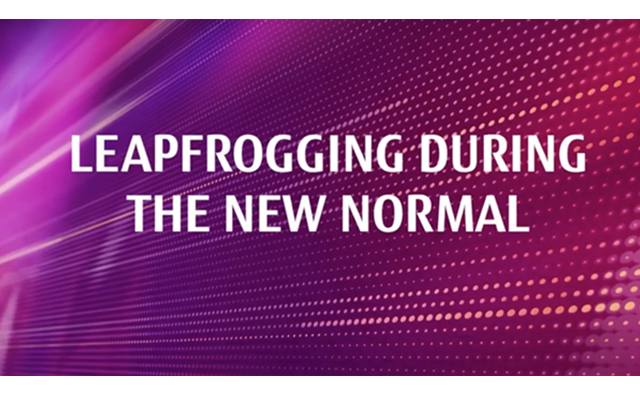
Timely modernization
None of this would be possible for FedEx, says Puri, were it not for the fact that he and his team spent two years between 2017 and 2019 working on an extensive modernization of the company’s internal systems, laying a rock-solid foundation for future innovations.
In its five-year quest to become a digital master, VM has sought to build the capability to actively and repeatedly exploit new and emerging technologies, dramatically enhance customer services, drive significantly higher levels of profitability, productivity and performance, and in parallel to create new models for generating the business of the future.
“[The aim is to] always keep your desired end-state in mind while eliminating any technical debt that you know will slow you down in the future.”
“That’s our thinktank, where we all have a role in considering what strategies and actions need to be in play, who’s accountable for what, and what measures we are going to have as part of that accountability,” he says. “That foundational piece is critical as the individuals in that group have the biggest influence on making change happen in the organization.”
What’s more, no topic is ever off the table. “We have very contentious, very free conversations. We talk about racial equity, individual identity, culture, values. What is the need of the organization? Where are we missing the boat? What are our opportunities? What’s right from wrong? And what do we do? What are our employees telling us?”
 ‘Designing big; implementing small’ (Image: FedEx)
‘Designing big; implementing small’ (Image: FedEx)
That kind of scale of change is matched by the scope of Puri’s responsibilities: from his offices in the Netherlands, he leads almost all aspects of IT activities in Europe, Africa and Asia. At the same time, he’s heading up the company’s ongoing IT integration of TNT, a European carrier that FedEx acquired for €4.4 billion in 2016.
There were three main themes to the modernization phase, he says. The first was adopting “architecture-driven thinking,” to help eliminate complexity in both systems and business processes.
“So you’re always keeping your desired end-state in mind and eliminating any technical debt that you know will slow you down in the future.”
The temptation at the start of the journey, she says, was to focus on filling technological gaps. However, when VM asked technology partners, including Fujitsu, to assess its digital capabilities and how they should evolve, the same fundamental questions came back: “What ultimately are you trying to achieve?
In this context, Puri is not only talking about IT architecture but also about business architecture. “Because what are IT systems but the codification of existing business processes. So when you’re designing a business architecture, you want to think about all your business processes and how you want them to run, end to end.”
Value at speed
The second strand to that comprehensive modernization focused on applying an ‘API-first’ strategy, based on a service-oriented architecture. This means that many of FedEx’s underlying applications have been broken down into componentized services — ‘chunks’ of code that isolate specific functions or business capabilities and can be connected with other ‘chunks’ via application programming interfaces (APIs) to assemble new services or expand the scope of existing ones.
“This has helped us reduce complexity and technical debt but it has also made us much faster because of the way we can reuse components and APIs quickly and at enormous scale to deliver business value at speed,” he says.
“We can [now] reuse components and APIs quickly and at enormous scale to deliver business value at speed.”
 FedEx: Accelerated innovation agenda (Image: Oliver Holzbauer/Flickr)
FedEx: Accelerated innovation agenda (Image: Oliver Holzbauer/Flickr)
The second strand to that comprehensive modernization focused on applying an ‘API-first’ strategy, based on a service-oriented architecture. This means that many of FedEx’s underlying applications have been broken down into componentized services — ‘chunks’ of code that isolate specific functions or business capabilities and can be connected with other ‘chunks’ via application programming interfaces (APIs) to assemble new services or expand the scope of existing ones.
“This has helped us reduce complexity and technical debt but it has also made us much faster because of the way we can reuse components and APIs quickly and at enormous scale to deliver business value at speed,” he says.
“We can [now] reuse components and APIs quickly and at enormous scale to deliver business value at speed.”
Finally, Puri and his team have rid FedEx of a great deal of legacy technology that might otherwise have presented an obstacle to its leapfrogging ambitions. This includes older proprietary systems, which had delivered decades of good service but were ready for retirement.
“These could stand in our path when it comes to delivering value faster. If you’re not able to eliminate the anchors of your legacy estate, you’ll never achieve the kind of speed you’re looking for,” he says. “As for the applications they previously hosted, we’ve generally migrated these to the cloud or to more modern computing platforms within our hybrid cloud set-up.”
Technology acceleration is by no means restricted to the International FedEx operation that is Puri’s domain.
In the US, FedEx Office — the retail outlet for FedEx Express and FedEx Ground shipping, as well as for local printing, copying, and binding services — has embarked on a digital transformation designed to enhance customer experience across its 2,200 US stores. At the center of this effort is a single point-of-sale transaction engine, driven by the Fujitsu Market Place omni-channel retail platform. Implementing such a single selling system across different end-points and devices simplifies the transactions performed by store associates, freeing them up to spend more time focused on customer needs.
As Puri observes: “Our cooperation with Fujitsu on the FedEx Office side allows us to compete more effectively in that space, both physically and digitally.”
Responding to COVID-19
With much of the IT modernization complete at FedEx International, Puri and his team were well prepared for some major leaps forward in 2020 as the scale and impact of COVID-19 became clear. “With the modern IT foundation we needed in place, we were able to reach some big milestones at remarkable speed,” he says.
One of the first priorities was to get as many FedEx employees as possible working from home. An effort that began in China was extended to Italy as the virus spread, and then to other regions of the world. Within just a week, Puri says, almost 100,000 team members and partners were fully equipped to work from home, with the company able to exploit its own vast logistics network to deliver computing equipment where needed. To support that dispersed model, virtual private network (VPN) capacity was increased threefold over the course of two weekends, he adds.
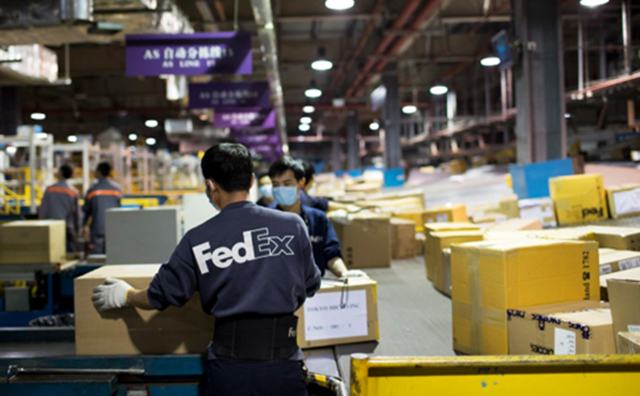 FedEx’s Asia-Pacific hub, Guangzhou, China (Image: Getty Images)
FedEx’s Asia-Pacific hub, Guangzhou, China (Image: Getty Images)
One of the first priorities was to get as many FedEx employees as possible working from home. An effort that began in China was extended to Italy as the virus spread, and then to other regions of the world. Within just a week, Puri says, almost 100,000 team members and partners were fully equipped to work from home, with the company able to exploit its own vast logistics network to deliver computing equipment where needed. To support that dispersed model, virtual private network (VPN) capacity was increased threefold over the course of two weekends, he adds.
The amended processes and related technology changes to support contactless delivery, meanwhile, were delivered across the FedEx network within 10 days of the request from executive management. This service — already available to some North American customers — allows recipients to customize their interactions with delivery workers ahead of time, requesting for example that a package is left in a safe place or on a customer’s doorstep. For obvious reasons, demand for this service soared, with the underlying message shifting from the typical ‘I may not be home at that time’ to ‘I’d rather not risk contact with a delivery driver.’
Says Puri: “Again, this was something our modern systems enabled us to roll out to a far wider customer base in very short order, so we could address their very real concerns around proximity.”
“We’ll keep leapfrogging, because it’s a purposeful way to stay ahead through the pandemic — and in any situation.”
In terms of giving customers greater visibility and regular updates on a package’s journey, the company is rolling out the FedEx SenseAware ID service. This offering is designed for time-critical deliveries of high-value packages and will improve the safety, security and timeliness of deliveries — key attributes for packages that contain critical contents such as life-saving pharmaceuticals and emergency medical supplies.
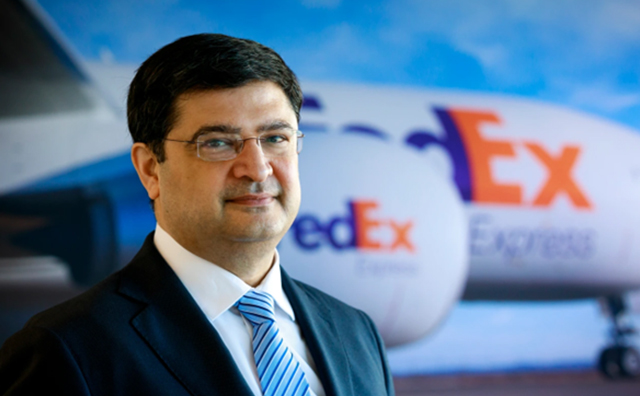 Nik Puri, SVP International IT, FedEx (Image: Mark van den Brink, (courtesy of FedEx)
Nik Puri, SVP International IT, FedEx (Image: Mark van den Brink, (courtesy of FedEx)
Packages equipped with the SenseAware ID sensor are tracked hundreds of times versus dozens of times with traditional package scanning protocols, which provides an unprecedented amount of real-time data about the location of the shipment. Says Puri, “We’re at the start of our journey with SenseAware ID but we now predict that it’s going to be a faster, shorter journey since more of the market is now demanding that kind of visibility.”
While COVID-19 may have provided the catalyst for this kind of leapfrogging, Puri sees his team harnessing that new approach well into the future. In other words, a vital part of the company’s immediate response to the pandemic is now seen as playing an invaluable role in FedEx’s long-term market differentiation.
”Right now, we’re prioritizing work that provides quick value and differentiates us to customers in the context of a specific situation. But asking what we can do to meet the changing needs of the market and, preferably, what we can do that our competition cannot — these aren’t questions that will diminish in importance at any time. We’ll keep leapfrogging, because it’s a purposeful way to stay ahead, in any situation.”
100,000
No. of team members and partners FedEx equipped to work from home — in one week — as COVID-19 struck

Watch Nik Puri exploring FedEx’s accelerated digital journey in the Fujitsu CxO Speaks webinar series



